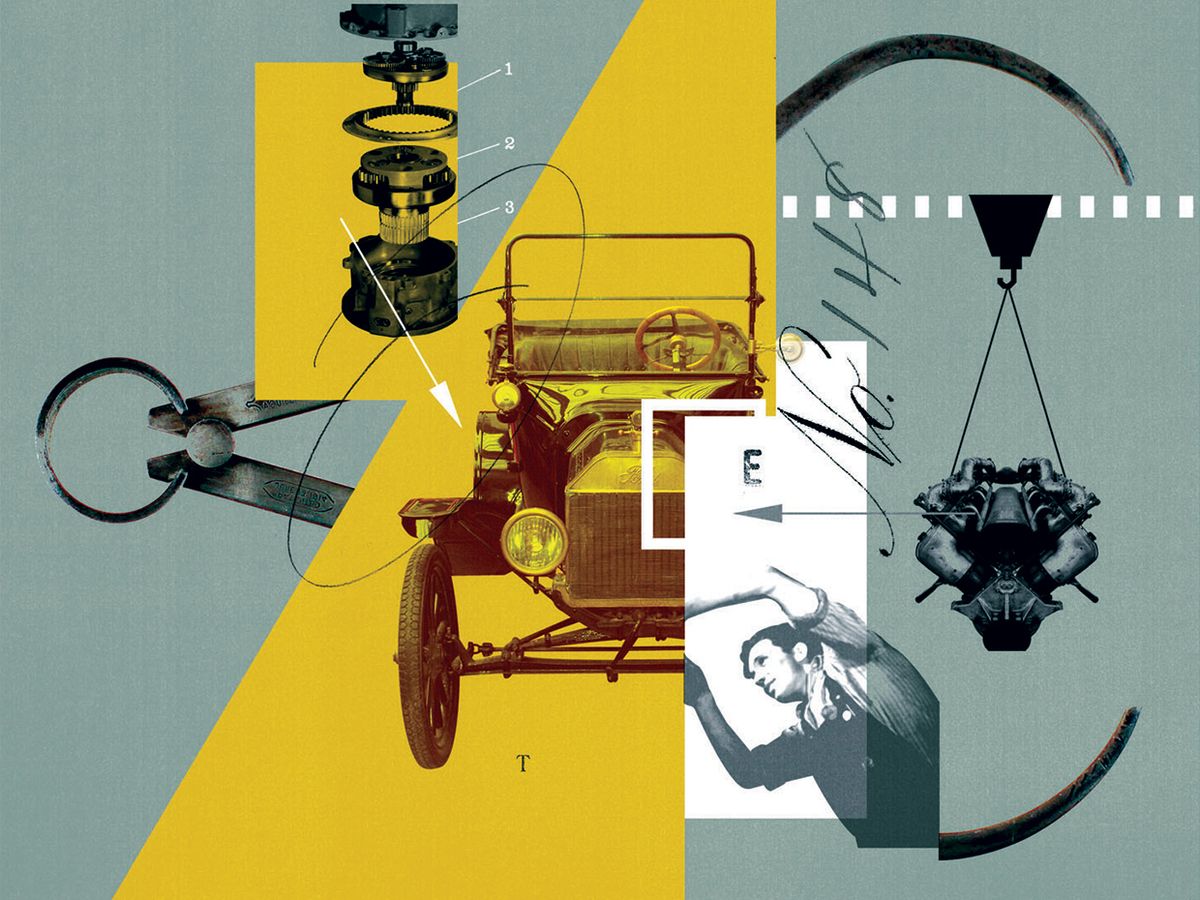In 1908, Henry Ford had been working in the auto business for more than a decade, and the Ford Motor Co., five years old and already profitable, had so far followed its peers by catering to the well-to-do. Its Model K, introduced in 1906, was priced at around US $2,800, and the smaller Model N, introduced the same year, sold for $500—about what the average person earned in a year.
Then, on 12 August 1908, the age of the automobile began, because on that day the first Ford Model T was assembled at Detroit’s Piquette Avenue Plant. It went on sale on 1 October.
Ford made his goals clear: “I will build a car for the great multitude. It will be large enough for the family, but small enough for the individual to run and care for. It will be constructed of the best materials...after the simplest designs that modern engineering can devise. But it will be so low in price that no man making a good salary will be unable to own one.” He met those goals, thanks to his vision and to the talent he was able to recruit, notably the designers Childe Harold Wills, Joseph A. Galamb, Eugene Farkas, Henry Love, C. J. Smith, Gus Degner, and Peter E. Martin.
The four-cylinder water-cooled engine put out 15 kilowatts (20 horsepower), the top speed was 72 kilometers per hour (45 miles per hour), and the price was low. Runabout, the most popular model, sold for $825 in 1909, but continuous design and manufacturing improvements let Ford lower the price to $260 by 1925. That represented about two and a half months’ wages for the average worker at the time. Today, the average new-car price in the United States is $34,000, or about 10 months’ median salary.
The first key step on the car’s road to market dominance was the introduction of a moving assembly line in the Highland Park factory in 1913. This brought substantial economies of scale: Already by 1914 the plant was turning out 1,000 automobiles a day. The second step was Ford’s decision to pay unprecedented wages for unskilled assembly labor. In 1914 the rate was more than doubled to $5 a day, and the working day was reduced to 8 hours.
The outcome was impressive. Ford Motor Co. produced 15 percent of all U.S. cars in 1908, 48 percent in 1914, and 57 percent in 1923. By May 1927, when the production run ended, the company had sold 15 million Model Ts.
Ford stood at the very beginning of manufacturing globalization, using standardized procedures and dispersing car assembly around the world. Foreign assembly began in Canada and then fanned out to the United Kingdom, Germany, France, Spain, Belgium, and Norway, as well as to Mexico, Brazil, and Japan.
But even though Ford staked much on this one car, it didn’t quite become the best-selling vehicle in history. That primacy belongs to the “people’s car” of Germany—Volkswagen. Soon after he came to power, Adolf Hitler decreed its specifications, insisted on its distinct beetlelike appearance, and ordered Ferdinand Porsche to design it.
By the time it was ready for production, in 1938, Hitler had other plans, and the car’s assembly didn’t begin until 1945, in the British-occupied zone. German production ended in 1977, but the original VW Beetle continued to be assembled in Brazil until 1996 and in Mexico until 2003. The last car, made in Puebla, was number 21,529,464.
But in many ways the Beetle was just an updated emulation of the Model T. There can never be any dispute over who got there first.
This article was corrected on 20 August 2018. In 1914, Ford doubled the wages of assembly-line workers to $5 per day, not $5 per hour.
Vaclav Smil writes Numbers Don’t Lie, IEEE Spectrum's column devoted to the quantitative analysis of the material world. Smil does interdisciplinary research focused primarily on energy, technical innovation, environmental and population change, food and nutrition, and on historical aspects of these developments. He has published 40 books and nearly 500 papers on these topics. He is a distinguished professor emeritus at the University of Manitoba and a Fellow of the Royal Society of Canada (Science Academy). In 2010 he was named by Foreign Policy as one of the top 100 global thinkers, in 2013 he was appointed as a Member of the Order of Canada, and in 2015 he received an OPEC Award for research on energy. He has also worked as a consultant for many U.S., EU and international institutions, has been an invited speaker in more than 400 conferences and workshops and has lectured at many universities in North America, Europe, and Asia (particularly in Japan).



